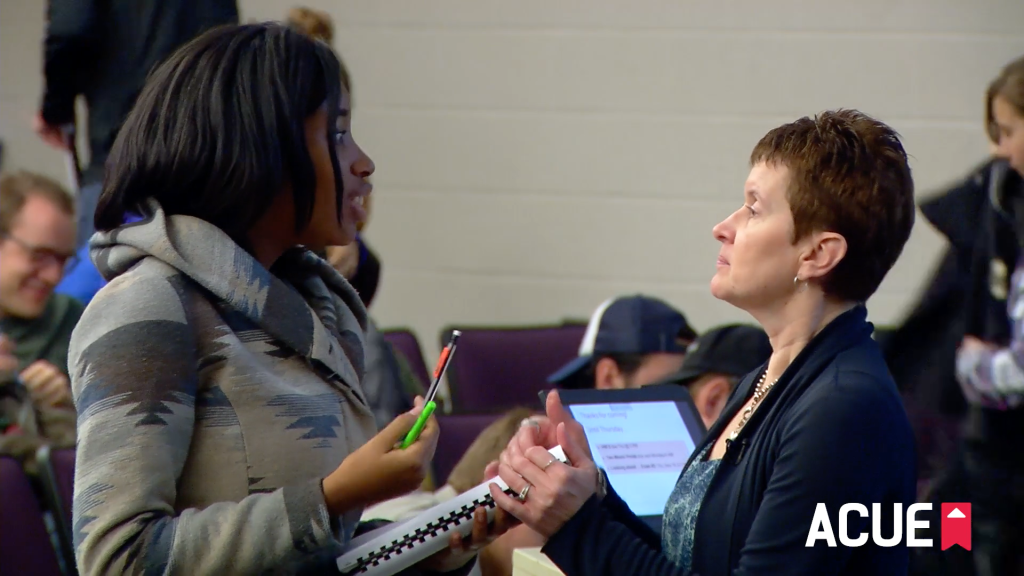
ACE paper: Evidence-based teaching practices linked to student success, but not widely used
Effective teaching is closely linked to student success, but evidence-based practices are still not widely used in higher education, finds a white paper released this week by the American Council on Education (ACE).
“Instruction matters,” concludes the paper, Unpacking Relationships: Instruction and Student Outcomes. “And higher education needs to provide support for faculty to help students attain outcomes.”
The paper’s author, Natasha Jankowski, discussed her findings with senior administrators, faculty developers, and college educators in a webinar hosted by ACE on Tuesday. During the discussion, Jankowski said that evidence-based teaching practices are usually limited to small pockets on campuses. “They’re not happening at a scale in which you can see an impact,” said Jankowski, director of the National Institute for Learning Outcomes Assessment.
College leaders echoed those sentiments during the one-hour webinar.
“We are quite concerned about scale–and reaching our 990 adjuncts,” wrote one participant from Cal State LA, citing Cal State LA’s partnership with ACUE to address the challenge.
ACUE and ACE have teamed up to address scalability concerns and dramatically improve student outcomes through effective instruction. Faculty who satisfy ACUE Course requirements earn a Certificate in Effective College Instruction endorsed by ACE, a distinction that shows they have learned and applied evidence-based approaches in the classroom.
In the paper, Jankowski writes that success hinges on whether students are learning from proven instructional methods and in engaged learning environments. She focuses on five “areas of intersection” between instruction and student outcomes:
- Transparency to ensure teaching and learning is visible to all students and that they have a clear understanding by which they will be assessed.
- Pedagogical approaches that include research-based practices such as active learning, flipped classrooms, service learning, and problem-based learning.
- Assessments that are inherently embedded in teaching and learning.
- Self-regulation and the role of students’ active engagement in their own learning.
- Alignment of various elements within a learning environment, such as content, instructional design, and assignment.
Additional ACUE resources related to these topics:
- ACUE’s Expert Series article on transparent instruction featuring Mary-Ann Winkelmes
- ACUE’s Effective Practice Framework covers the essential college teaching practices, organized across five units
- ACUE’s Assessing to Inform Instruction and Promote Learning unit, which includes the Checking for Student Understanding module
- ACUE’s Expert Series article on metacognition, featuring Saundra McGuire
- ACUE’s Designing an Effective Course and Class unit, which includes modules on Aligning Assessments With Course Outcomes and Aligning Activities and Assignments with Course Outcomes

